The Alps, 1920s style: aboard the Venice Simplon-Orient-Express on its inaugural trip to ski resorts
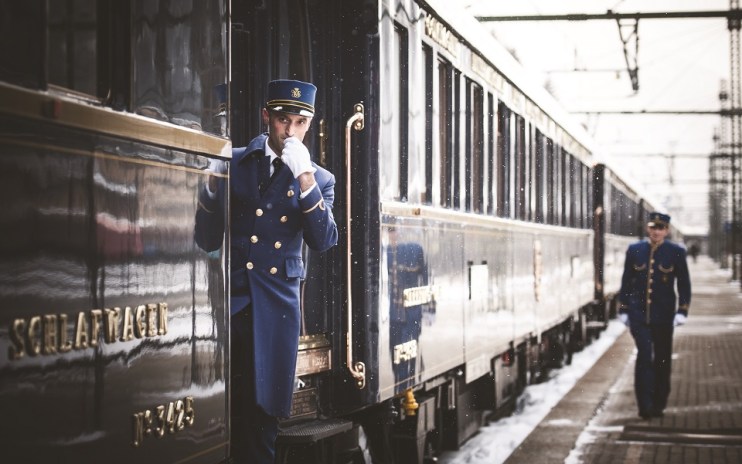
We discover that “The Train,” as society types call the Venice Simplon-Orient-Express, is the ultimate 1920s immersive theatre experience
The train is careering through the darkened outskirts of Paris when oysters are placed at my table to pair with my last glug of champagne. I’m eating from an embroidered armchair more accurately described as a throne. Someone presents another dish prepared by the Michelin starred French chef Jean Imbert, the current wonderkid of Parisian dining, and we raise a toast as the train sways past the high rises and out into the depths of the vast French countryside.
It’s a hostile winter evening, the type of jet black I can’t see through even when I cup my hands to the train windows, but the outside doesn’t matter: within these hallowed century-old metal walls, the world’s greatest immersive theatre show has just raised its curtain. It’s dinner time and we’re starting on truffle chicken and Beaujolais as a guitarist in a dinner jacket takes a pew next to us. A saxophonist and a male baritone singing in a tux rock up too and put on one hell of a show in the few feet of space between tables.
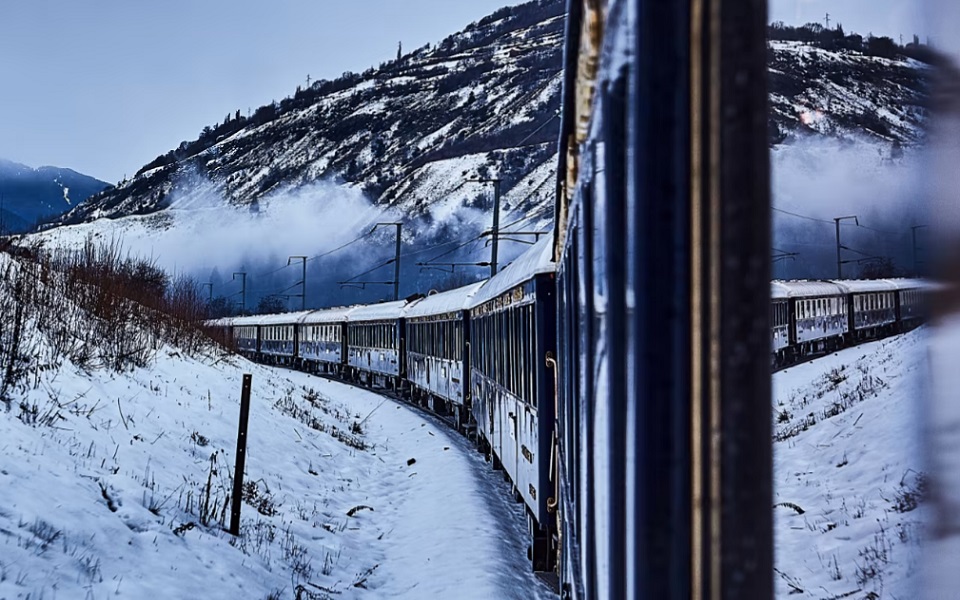
Society types call it “The Train.” The ‘Venice Simplon-Orient-Express’ sounds ostentatious, so “the train” makes sense, plus it feels like secret coding to refer to something so special in a banal way, like calling Claridge’s “a bed for the night”. It was a historic journey, the first time the Grand Dame of rail travel had traversed to the French Alps from the capital city. The one-night journey is on sale now for trips departing from this December.
Back on board, it’s past mealtime and in another carriage mixologists in white dinner jackets are performing the second act. The bar is tiny but they put on the most spectacular display as they shake cocktails at a speed as fast as the train moves. The bar people’s limbs seem to move robotically, knowing every inch of the counter and how to exploit it without taking up too much room. They don’t break a sweat, but the pressure is on: a queue cannot form as there is no room. When someone passes through the bar carriage you do your best lizard impression, squeezing against the wall with arms up high to let others pass. It’s quite something, especially with everyone dressed in their finery. There’s a menu but I just ask for a dry gin cocktail to see what happens. Something exquisite turns up.
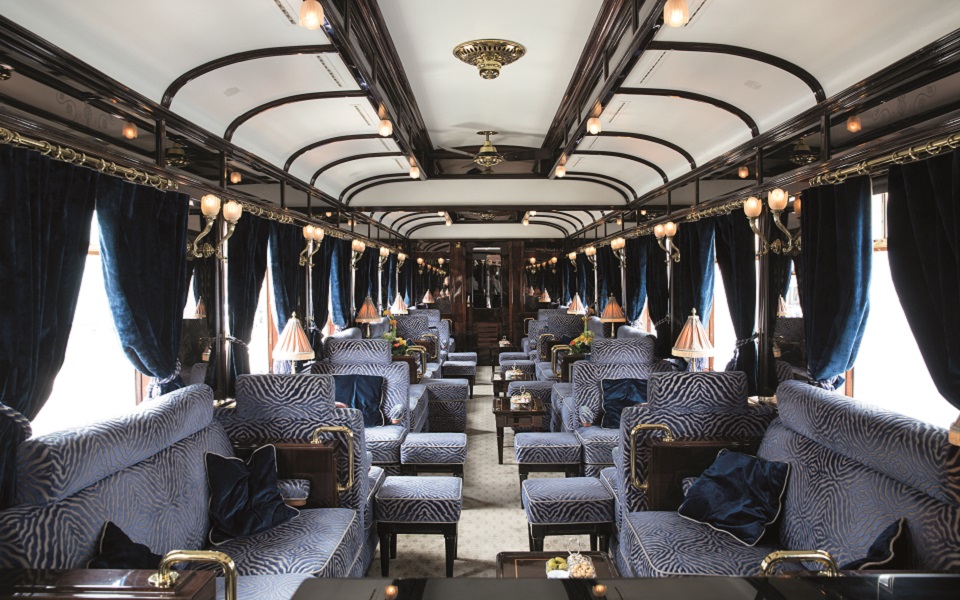
We’d been hurtling along at an unnervingly fast pace for a hundred-year-old train, but as I retire to the depths of the royal blue armchairs in the bar car, we reach Dijon and slow to a stop. The image of train travel in our heads, certainly if you haven’t done much, is of perpetual motion, but the reality is more stop and start. “Think of her like an old lady,” one worker tells me. What did he mean? The Venice Simplon-Orient-Express is so old that it needs to take continual rests so the strain of motion doesn’t cause the engine and carriages too much decay. Carriages were constructed from the mid-1920s and go through a painstaking annual refurbishment. Wood panelling in sleeping cabins is re-varnished and measured to the millimetre. Once the wood gets too thin, it’s replaced, but most of the fixtures on the train are original.
Carriage 3309 bookends the train. It is the actual carriage that in 1929 got marooned in a snowstorm outside Istanbul. Agatha Christie took the train and heard about the incident which inspired a novel you might have heard of: Murder On The Orient Express. It’s totally surreal wandering through that carriage, not only because of the obvious history, but because of its modern use. It is the only carriage that has been gutted and redesigned and these days, three suites fill the entire length of the carriage. They are Prague, Vienna and Budapest – all destinations of the train – and for the forthcoming Paris to Courchevel trip, rates start from around £15,000 per night. Each has its own antique sofa to watch the view as low-lying hills turn into mountains the following morning when the train reaches the foothills of the Alps.
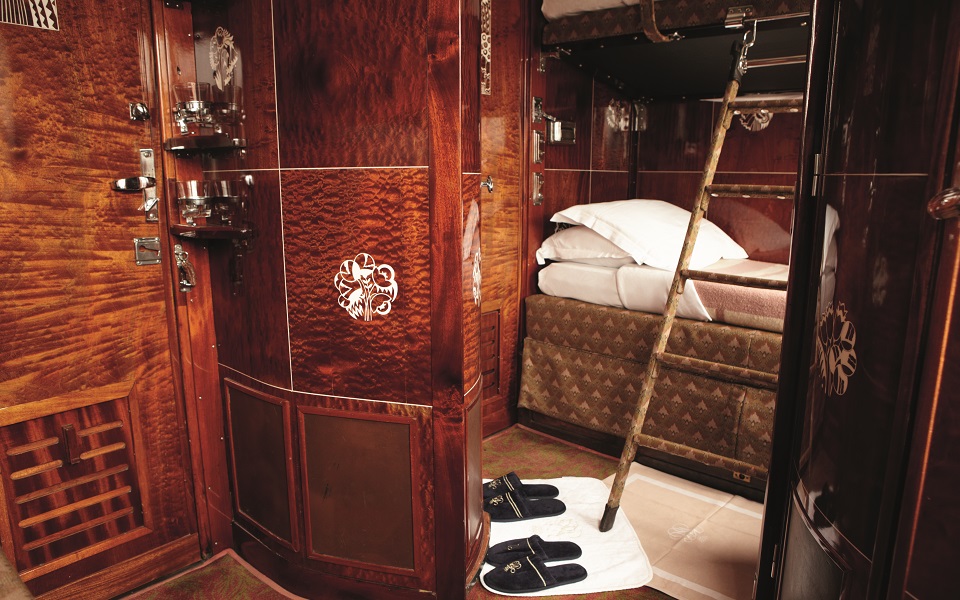
I’m awakened by acceleration in the morning, when rays of sunlight threaten the safety of the darkness of my cabin, protecting me from my encroaching hangover. I’d not been in bed long. The dry gin cocktails had kept flowing, and some friends had been singing beside the piano until halfway through the night. “No one goes on the train to sleep,” train manager Pascale tells me with a provocative smile when I tell him about my night over brunch. But first I raise my cabin shutter while lying in bed, appreciating the calmly repetitive sound of the rails on the track, observing the forests, lakes and towns we go by. It’s a welcome opposition to the human clatter of the night that had been, back when we were sinking martinis like they like they were going out of fashion.
There is one toilet per carriage on the train as there always had been. Patrons romanticise that its carriage structures have remained exactly as they were last century rather than pandering to new trends. Soon, the safety of my hangover duvet is no more: it has been removed, my bed transformed back into a sofa, the plush cushions plumped. In front of me, a small wardrobe and washing basin – again, from the era – can both be touched from the sofa. At 6 foot 2, I’m too tall for the bed, but as Pascale says, who comes on here to sleep?
I dress again for brunch in the unfathomably gorgeous dining carriage watching the mountains rush by. There’s snow, and we’re careering towards Alpine towns replete with their ski chalets and powdery slopes without the stress of an airport polluting my thoughts. There was a seafood soup, brilliant pasta, more wine, more champagne, more genial banter. It was sublime to dine during the daytime. In the evening the carriage itself was the artwork, but this morning the windows frame the natural world. At its essence, the Venice Simplon Orient Express is really 1920s cosplay, with the staff and guests dressed to evoke the romance of The Roaring Twenties. Everything’s highly performative, the bar staff aware that as well as crafting a crushable Manhattan, they’re also on duty as actors of a sort. It’s a thought to ponder on that no one takes the train for travel purposes anymore; there are simply easier ways of getting from A to B. So if the trip hasn’t changed physically, the most profound way it has adapted is going from a practical travel experience to a touristic one. That, of course, changes the vibe on board. It does feel like a show is being put on and after a while, the novelty might wear off, but for a special few evenings, or the ultimate five-day trip to Istanbul, it’s exactly the bucket list experience you hope for. What everyone’s parents dream of doing but most never do.
Private shuttles were organised by the train and soon I had arrived in Courchevel 1850. I had a fresh glass of sparkling waiting for me at the Hôtel Barrière Les Neiges. There, where I could ski in and ski out, I became a part of the picture-postcard snowsports scene synonymous with the area. When I wasn’t skiing, I was in the outdoor hot tub surrounded by snow, peering at the mountains beyond. The hotel is one of a prestigious line of properties on the fringes of the slopes in Courchevel, next door to the Aman.
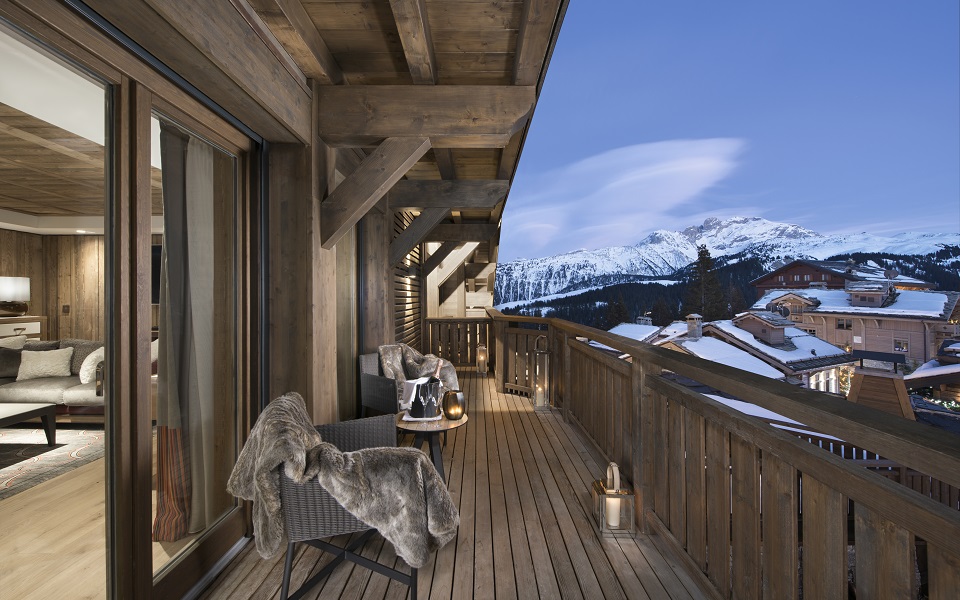
On the Les Neiges terrace, guests sunbathed as they watched relatives ski past. I had eschewed the pomp of the Aman for something more cosy, as the Les Neiges touts an Alpine-chic vibe, with gorgeous thick warm throws in the rooms and a winter cabin feel throughout, the rooms with impressive mountain and ski views. That night over dinner in the Cartes restaurant I revealed to other guests how I’d made my way to the French Alps from London. It’s hard to impress the skiers of this highly upmarket resort who pay thousands per night to stay on the slope’s edge, but when I regaled them with stories of the train their eyes brightened. They were like children hearing about Disneyland for the first time.
The Venice Simplon-Orient-Express takes its first trips to the French Alps this December and booking is now available. The train departs Paris for Albertville, Moûtiers or BourgSaint-Maurice in the French Alps. All three locations are well suited for transfers to the ski resorts like Mont Blanc and Courchevel. The train costs from £3,785 per person and the first journeys depart in December. Book at Belmond.com/trains. Rooms at the Hôtel Barrière Les Neiges start from around £1,600. Hotelsbarriere.com
Read more from City A.M. Travel
